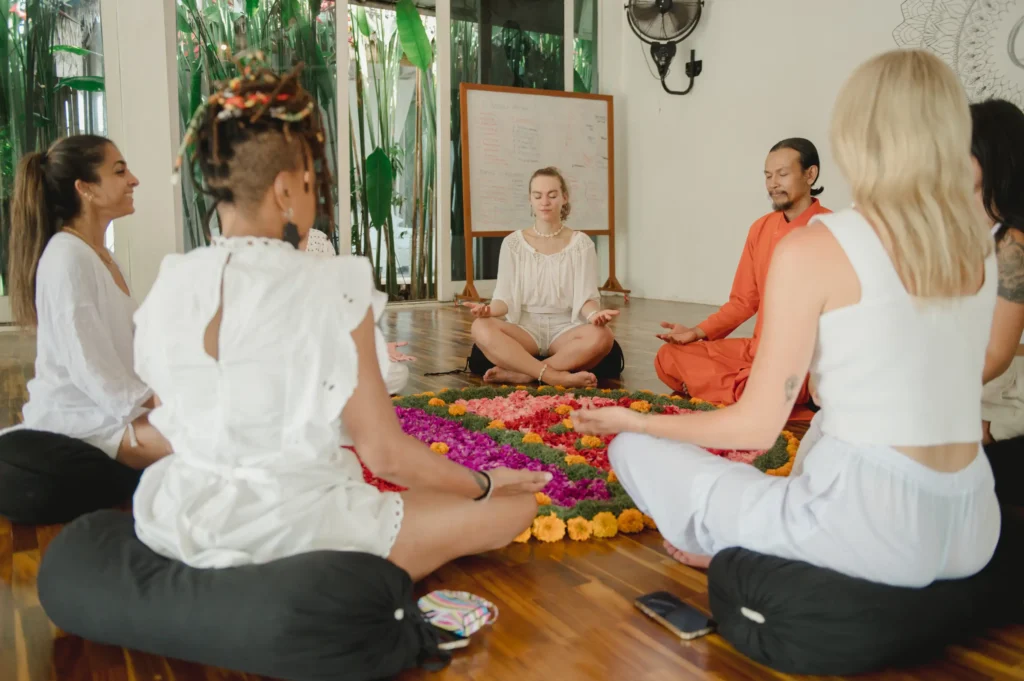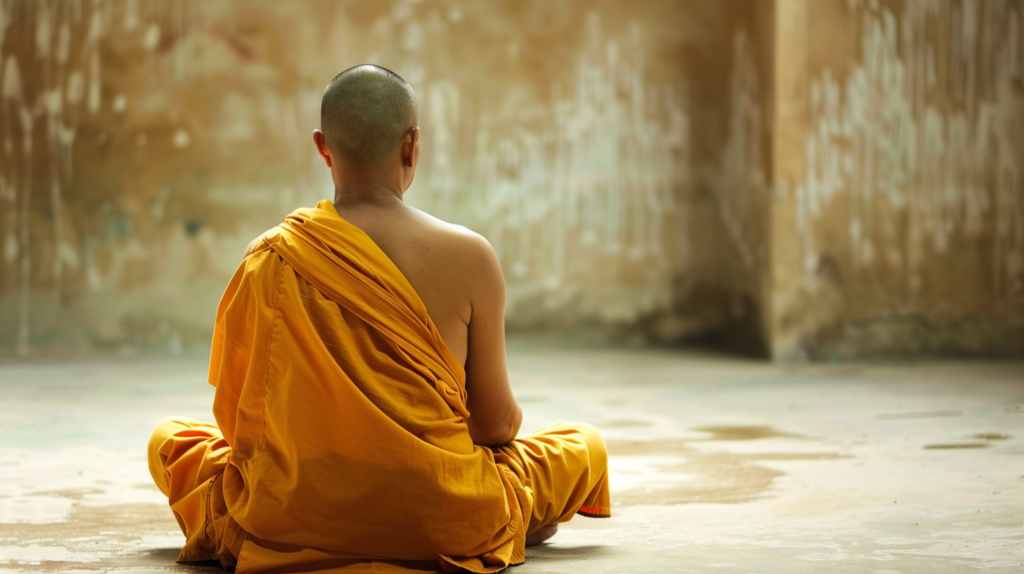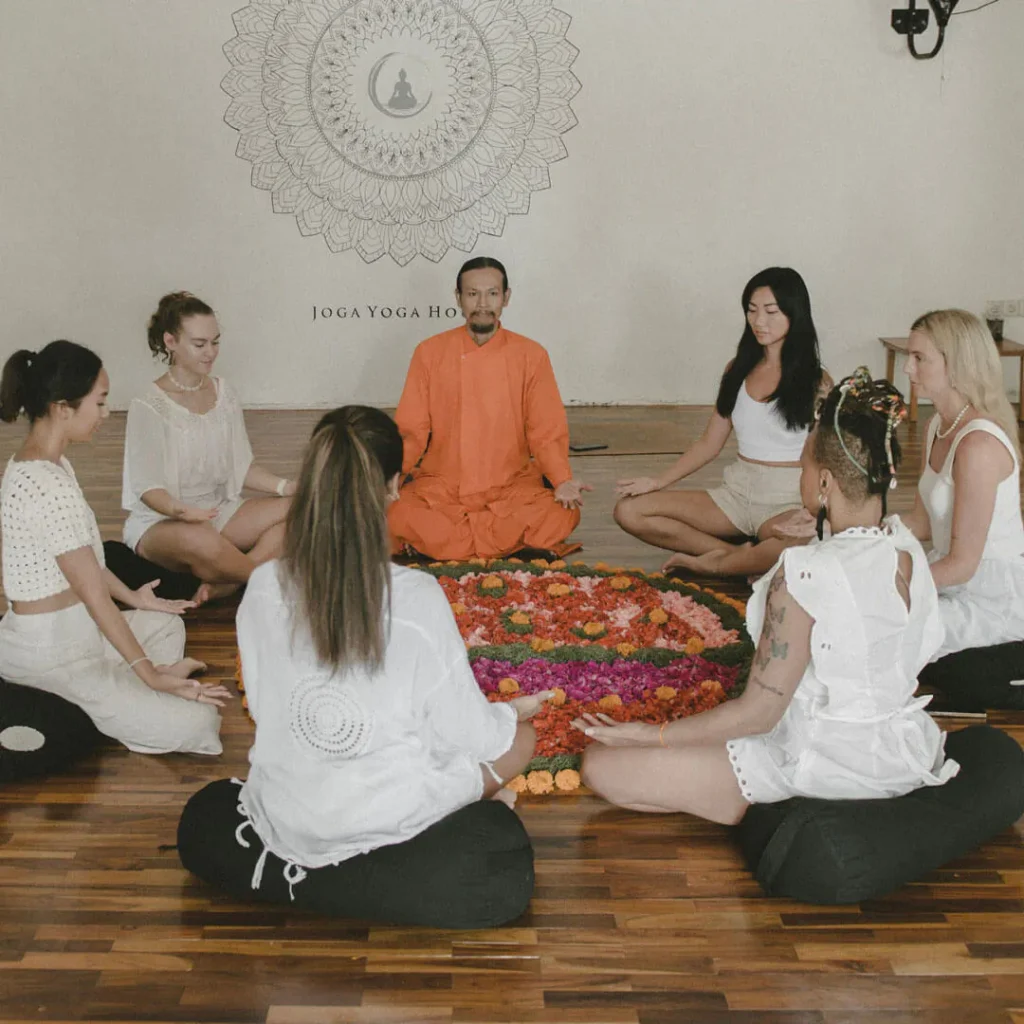Yoga meditation is a practice that combines physical postures and mental focus to promote holistic well-being. Historically rooted in ancient traditions, it has evolved over centuries to become a powerful tool for enhancing both physical health and mental health. In contemporary times, the relevance of yoga meditation has surged, driven by its proven benefits in stress relief, improved flexibility, better cardiovascular health, reduced anxiety, and enhanced concentration. This guide aims to provide a comprehensive overview of yoga meditation, exploring its techniques, benefits, and various practices to help you integrate this valuable discipline into your daily life.
Understanding Yoga Meditation
Yoga meditation traces its origins to ancient yoga practices, deeply embedded in Vedic traditions. Historically, yoga and meditation emerged as integral parts of spiritual practices aimed at achieving higher states of consciousness and spiritual awakening. The foundational texts, such as the Yoga Sutras by Patanjali, outline the principles and methods of yoga, including meditation as a crucial component.
The history of yoga meditation spans thousands of years, with its roots in the Indus Valley civilization. Over time, various forms and practices evolved, including Vinyasa, which focuses on the flow of movement synchronized with breath. The development of these practices was influenced by the pursuit of spiritual yoga, aiming to unite the mind, body, and spirit.
Patanjali meditation and other ancient meditation practices emphasize the importance of mental discipline and focus. These practices were designed to transcend ordinary experiences, leading practitioners toward a deeper understanding of themselves and the universe. Understanding the origins of yoga meditation provides insight into its enduring relevance and the profound impact it can have on modern practitioners.

Types of Yoga Meditation Practices
Yoga meditation encompasses various styles and techniques, each offering unique approaches to integrating physical and mental practices. The primary types include Hatha Yoga, Vinyasa Flow, Ashtanga Yoga, and Kundalini Yoga, each with its distinct meditation techniques.
- Hatha Yoga:
- Hatha meditation focuses on achieving balance and harmony between the mind and body through physical postures and breath control.
- Techniques often include deep breathing exercises and yoga poses held for extended periods to enhance concentration and inner peace.
- Vinyasa Flow:
- Vinyasa techniques emphasize a dynamic sequence of movements synchronized with breath, promoting a meditative state through continuous flow.
- This practice involves dynamic breathing and smooth transitions between poses, fostering a sense of fluidity and mindfulness.
- Ashtanga Yoga:
- Ashtanga practice is a structured and rigorous form of yoga that incorporates a fixed sequence of postures linked with breath.
- Meditation in Ashtanga often focuses on mantra chanting and sustained attention to the flow of breath and movement.
- Kundalini Yoga:
- Kundalini benefits are derived from its focus on awakening spiritual energy through breath control, mantra chanting, and specific postures.
- Techniques include dynamic breathing exercises, repetitive movements, and meditative practices aimed at activating and channeling spiritual energy.
Each of these types of yoga meditation offers distinct pathways to achieving mental clarity, physical strength, and spiritual growth. By exploring these styles, practitioners can find the techniques that resonate most with their personal goals and preferences.
Physical Benefits of Yoga Meditation
Yoga meditation offers numerous physical benefits, enhancing overall physical health and well-being. Regular practice significantly improves flexibility, strength, posture, and pain management.
- Flexibility:
- Yoga poses and stretches improve joint mobility and muscle strength, contributing to greater flexibility.
- Consistent practice helps lengthen muscles, reducing stiffness and increasing range of motion.
- Strength:
- Many yoga postures are weight-bearing, promoting strength-building by engaging multiple muscle groups.
- Enhanced muscle strength supports better physical performance and reduces the risk of injuries.
- Posture:
- Yoga emphasizes alignment and balance, leading to noticeable posture improvement.
- Strengthening the core and back muscles helps maintain an upright posture, reducing strain on the spine.
- Pain Relief:
- Yoga meditation is effective in chronic pain relief, particularly for conditions like lower back pain and arthritis.
- Gentle stretching and breath control techniques help alleviate pain and improve overall comfort.
- Cardiovascular Health:
- Dynamic forms of yoga, such as Vinyasa and Ashtanga, enhance cardiovascular health by increasing heart rate and promoting circulation.
- Regular practice improves lung function and enhances oxygen intake.
Understanding Yoga Anatomy is crucial for maximizing these physical benefits, as it provides detailed insights into how different poses impact various muscles and joints, helping practitioners avoid injuries and optimize their practice.
Yoga for flexibility, strength-building yoga, and yoga pain relief techniques collectively contribute to a healthier, more resilient body. By integrating these practices into your routine, you can experience significant physical benefits and an enhanced quality of life.
Mental and Emotional Benefits
Yoga meditation provides substantial mental and emotional benefits, significantly enhancing overall mental health. Practicing yoga meditation aids in reducing anxiety, managing depression, and alleviating stress, while also promoting mindfulness and improving cognitive function.
- Anxiety Reduction:
- Yoga meditation helps lower levels of stress hormones, such as cortisol, effectively reducing anxiety.
- Techniques like deep breathing and mindfulness exercises calm the nervous system, fostering a sense of peace and relaxation.
- Depression Management:
- Regular meditation practices can be instrumental in depression management by promoting emotional balance and resilience.
- Activities focused on self-awareness and acceptance help combat negative thoughts and improve mood.
- Stress Relief:
- Stress relief yoga incorporates relaxation techniques that help release tension and improve overall mental well-being.
- Practices such as guided meditation and gentle stretching induce a state of deep relaxation, reducing stress.
- Mindfulness:
- Yoga meditation enhances mindfulness, encouraging a present-moment focus and greater awareness of thoughts and feelings.
- This increased mindfulness contributes to better emotional regulation and a more balanced perspective on life’s challenges.
- Cognitive Benefits:
- Engaging in regular meditation improves mental clarity and cognitive function, enhancing memory, concentration, and decision-making skills.
- Cognitive benefits of meditation include increased neural plasticity and improved brain function.
Incorporating yoga for anxiety, meditation for depression, and mindfulness practices into your routine can lead to significant mental and emotional improvements, ultimately resulting in a more balanced and fulfilling life.
How to Practice Yoga Meditation
Starting yoga meditation involves following a structured approach that includes learning basic poses, mastering breathing techniques, and creating a conducive meditation space. This step-by-step beginner’s guide will help you establish a regular practice routine.
- Setting Up Your Meditation Space:
- Choose a quiet, comfortable area in your home dedicated to your practice.
- Use a meditation cushion or yoga mat for comfort and stability.
- Ensure the space is free from distractions and has a calming atmosphere.
- Basic Yoga Poses for Beginners:
- Mountain Pose (Tadasana): Stand tall with feet together, grounding through your feet and lifting through the crown of your head.
- Child’s Pose (Balasana): Kneel on the mat, sit back on your heels, and stretch your arms forward, resting your forehead on the ground.
- Cat-Cow Pose (Marjaryasana-Bitilasana): On hands and knees, alternate between arching your back (cow) and rounding it (cat) with your breath.
- Seated Forward Bend (Paschimottanasana): Sit with legs extended, reach forward to touch your toes, and fold over your legs.
- Breathing Techniques:
- Deep Breathing (Diaphragmatic Breathing): Inhale deeply through your nose, allowing your abdomen to expand, and exhale slowly through your mouth.
- Alternate Nostril Breathing (Nadi Shodhana): Use your thumb to close one nostril, inhale through the other, then switch nostrils for the exhale, continuing alternately.
- Establishing a Daily Routine:
- Set aside a specific time each day for your yoga meditation practice to build consistency.
- Begin with short sessions, such as 10-15 minutes, and gradually increase the duration as you become more comfortable.
- Guided Meditation and Mindfulness:
- Incorporate guided meditations or mindfulness exercises to enhance your practice.
- Focus on your breath, body sensations, or a mantra to cultivate a meditative state.
For those looking to deepen their practice or teach others, enrolling in Joga Yoga’s Teacher Training Program can provide comprehensive knowledge and skills, covering advanced techniques, anatomy, and effective teaching methods. This program is beneficial not only for aspiring teachers but also for practitioners aiming to deepen their understanding of yoga meditation.
Following this step-by-step guide, you can effectively start yoga meditation, incorporating beginner yoga poses and meditation breathing techniques into your daily routine. Creating a dedicated meditation space and committing to regular practice will help you reap the full benefits of yoga meditation.
Advanced Techniques and Tips
For advanced practitioners, yoga meditation offers opportunities to deepen your practice through advanced techniques, challenging poses, and seamless integration into daily life. Here are some tips and strategies to elevate your yoga lifestyle.
- Advanced Asanas:
- Incorporate challenging poses such as Headstand (Sirsasana), Peacock Pose (Mayurasana), and Wheel Pose (Urdhva Dhanurasana).
- Focus on mastering the alignment, strength, and balance required for these advanced asanas.
- Deeper Meditation Practices:
- Engage in prolonged meditation sessions, gradually increasing the duration to enhance concentration and mindfulness.
- Explore intense breathwork techniques such as Bhastrika (Bellows Breath) and Kapalabhati (Skull Shining Breath) to invigorate and cleanse your energy.
- Integrating Yoga into Daily Life:
- Practice mindfulness in everyday activities, such as mindful eating, walking meditation, and conscious breathing throughout the day.
- Create a daily routine that incorporates yoga and meditation, making it a non-negotiable part of your lifestyle.
- Yoga Retreats and Workshops:
- Attend yoga retreats and workshops to immerse yourself in the practice, learn from experienced instructors, and connect with like-minded individuals.
- These intensive experiences can provide new insights, techniques, and inspiration for your personal practice.
- Holistic Lifestyle:
- Adopt a holistic lifestyle that supports your yoga practice, including a balanced diet, adequate rest, and self-care practices.
- Embrace the principles of yoga off the mat by cultivating compassion, mindfulness, and balance in all aspects of life.
You can significantly deepen your practice by incorporating these advanced yoga techniques, deep meditation tips, and challenging yoga poses. Integrating yoga into your daily routine and adopting a holistic lifestyle will help you achieve greater physical, mental, and spiritual growth.
Prana Yoga Meditation
Prana Yoga Meditation focuses on harnessing prana, the vital life force, through controlled breathwork or pranayama. This practice enhances the flow of energy within the body and mind, promoting overall vitality and well-being.
- Understanding Prana:
- Prana represents the essential life force flowing through and around us. Effective breath control regulates this energy, maintaining a calm, positive, and enthusiastic mind.
- Blockages in prana flow can lead to increased stress and emotional disturbances. Pranayama aims to clear these blockages, ensuring a smooth and continuous energy flow.
- Pranayama Techniques:
- Bhramari Pranayama (Humming Bee Breath): Calms the nervous system by making a humming sound during exhalation, helping to reduce hypertension and anxiety.
- Kapalbhati Pranayama (Skull Shining Breath): Detoxifies the body and energizes the nervous system through forceful exhalations, beneficial for advanced practitioners.
- Bhastrika Pranayama (Bellows Breath): Increases energy levels by vigorously filling and emptying the lungs, promoting healthy digestion and vitality.
- Nadi Shodhana Pranayama (Alternate Nostril Breathing): Balances the mind and body by purifying the energy channels, enhancing concentration and calming the mind.
- Benefits of Prana Yoga Meditation:
- Vital Energy Yoga: Enhances the flow of prana, increasing vitality and invigorating both body and mind.
- Energy Flow Meditation: Promotes mental clarity, reduces stress, and balances the nervous system by activating the parasympathetic response.
- Breath Control Yoga: Improves lung function, supports cardiovascular health, and aids in emotional regulation by connecting breath with emotions.
- Practical Application:
- Begin each session with a focus on your breath, using pranayama techniques to center your mind and prepare your body.
- Incorporate pranayama into your daily routine to maintain balanced energy levels and enhance overall well-being.
Prana Yoga Meditation involves utilizing breath control to optimize energy flow and improve physical and mental well-being. These techniques are powerful tools for enhancing vitality and inner balance.
Yin Yoga Meditation
Yin Yoga Meditation is a practice that emphasizes deep, passive stretches held for extended periods, targeting deep connective tissues and promoting relaxation. This approach not only improves physical flexibility but also offers profound mental and emotional benefits.
- Principles of Yin Yoga:
- Yin Yoga focuses on long-held poses that stress the connective tissues such as ligaments, tendons, and fascia. The practice aims to enhance joint mobility and flexibility by gently stretching these tissues.
- Unlike dynamic yoga styles, Yin Yoga involves passive stretches and encourages a meditative state through deep breathing and mindfulness.
- Meditative Approach:
- The meditative aspect of Yin Yoga helps in stress reduction and achieving mental clarity. The extended holds in each pose foster a state of relaxation, allowing practitioners to release deep-seated tension.
- Practicing mindfulness during poses promotes emotional balance and reduces anxiety by activating the parasympathetic nervous system, which calms the body and mind.
- Targeting Deep Connective Tissues:
- Yin Yoga is particularly effective in rejuvenating the fascia, the connective tissue that integrates the entire body. By holding poses for several minutes, Yin Yoga improves joint health, enhances flexibility, and helps release any tension stored in the body.
- Common poses such as Butterfly Pose (Baddha Konasana) and Caterpillar Pose (Paschimottanasana) target the hamstrings, lower back, and spine, providing significant physical and emotional benefits.
- Techniques and Benefits:
- Yin Yoga Meditation incorporates meditative yoga poses with the focus on deep tissue stretching and relaxation techniques. The practice improves circulation, balances hormonal levels, and stimulates the internal organs, aiding in overall well-being.
- Regular practice of Yin Yoga can alleviate conditions like migraines and fibromyalgia by promoting better blood flow and reducing stress.
- Incorporating Yin Yoga into Your Routine:
- Begin with a few poses, holding each for 3-5 minutes, and gradually increase the duration. Utilize props like bolsters and blankets for support to ensure comfort and proper alignment.
- Focus on maintaining a relaxed breath throughout the practice, using each exhale to deepen into the pose and release tension.
Yin Yoga Meditation offers a holistic approach to improving both physical flexibility and mental clarity. By integrating these meditative yoga poses and relaxation techniques into your routine, you can experience significant benefits in your overall health and well-being.
Common Misconceptions
Yoga meditation is often surrounded by myths and misconceptions that can deter people from starting or continuing their practice. Here are some common misconceptions and clarifications:
- Myth: Yoga is only for the flexible.
- Fact: Yoga is accessible to everyone, regardless of flexibility. The practice itself helps improve flexibility over time. Yoga involves much more than just physical postures; it includes breath control, meditation, and mental focus.
- Myth: Yoga is a hippie trend.
- Fact: While yoga gained popularity in the West during the 1960s and 70s, its roots go back thousands of years in ancient India. It is a well-established practice with numerous physical, mental, and spiritual benefits.
- Myth: You have to be calm and spiritual to do yoga.
- Fact: Yoga helps cultivate calmness and spirituality, but you don’t need to have these qualities to start. Many people begin yoga to achieve a more balanced and peaceful state of mind.
- Myth: Yoga is just a form of physical exercise.
- Fact: Yoga is a holistic practice that includes physical postures (asanas), breathing techniques (pranayama), and meditation. It aims to harmonize the body, mind, and spirit.
- Myth: Yoga takes too much time.
- Fact: Yoga practice can be flexible and fit into any schedule. Even short sessions of 10-15 minutes can be beneficial. The key is consistency rather than duration.
- Myth: Yoga is only for women.
- Fact: Yoga is for everyone. Historically, yoga was practiced by men, and today, many men from various professions practice yoga to enhance their physical and mental well-being.
- Myth: Pregnant women should not do yoga.
- Fact: Many yoga poses and practices are beneficial for pregnant women, helping them stay relaxed and fit. However, it is essential to practice under the guidance of a qualified instructor who can tailor the poses to suit the pregnancy stage.
- Myth: Yoga can be learned from books alone.
- Fact: While books can provide valuable information, having a qualified instructor is crucial for proper guidance and to avoid injuries. Instructors can offer personalized adjustments and ensure correct posture and alignment.
By addressing these common myths and misconceptions, more people can be encouraged to explore the benefits of yoga meditation and incorporate it into their lives for enhanced well-being.

Conclusion
Yoga meditation offers numerous benefits, impacting both physical and mental well-being. Throughout this guide, we explored various aspects of yoga meditation, including its historical roots, diverse practices, physical and mental benefits, and advanced techniques.
- Key Points Recap:
- Historical Roots: Yoga meditation has ancient origins, deeply embedded in Vedic traditions, aiming for spiritual awakening and holistic well-being.
- Types of Practices: Various forms such as Hatha, Vinyasa, Ashtanga, and Kundalini yoga offer unique approaches to meditation, each with distinct benefits.
- Physical Benefits: Improved flexibility, strength, posture, and pain management are significant advantages of regular yoga practice.
- Mental and Emotional Benefits: Yoga meditation effectively reduces anxiety, depression, and stress while enhancing mindfulness and cognitive function.
- Holistic Benefits:
- Overall Health: Yoga meditation promotes comprehensive health by integrating physical exercises, breath control, and mental focus.
- Wellbeing: It fosters emotional balance, mental clarity, and stress relief, contributing to a more centered and peaceful life.
- Encouragement for Regular Practice:
- Continuous Practice: Consistency is key to reaping the full benefits of yoga meditation. Even short, daily sessions can lead to significant improvements in health and well-being.
- Lifestyle Changes: Incorporating yoga into daily routines encourages a healthier lifestyle, balancing work and relaxation, and promoting long-term health.
Meditation commitment and a regular yoga practice can lead to profound holistic health benefits. By making yoga meditation a part of your daily routine, you can achieve greater physical health, mental clarity, and emotional balance, ultimately enhancing your overall quality of life.




